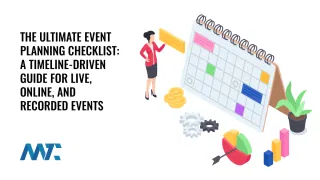A major shift is impacting digital marketing: the consumer data stream is drying up. Many businesses with previously top-performing Google links are suffering enormous traffic losses.
Businesses with links listed below Google’s new AIO summary feature in browser searches are facing traffic decreases of up to 80 percent, according to an Authoritas analytics study.
The Guardian
This has sharply reduced opportunities for brands to collect key customer data, such as intent, engagement, and interest, that could once be tracked by click-through rates (CTRs) and traditional SEO measurement.
The shakeup has become a hindrance for most marketers, if not a full-blown existential crisis, given how vital websites are in establishing brand awareness and driving brand loyalty for the vast majority of companies. With brands forced to consider new marketing strategies and channels, what immediate options are available to boost visibility and help measure engagement?
Understanding the AI Summaries Challenge
The rapid rise of AI-generated summaries in search engines such as Google’s AI Overviews, which were rolled out in May 2024, is dramatically impacting how brands remain visible online. Instead of directing users to individual websites, these summaries consolidate information from multiple sources and display a synthesized answer at the very top of search results, frequently pushing organic listings far below the fold.
Recent research shows that when an AI summary is present, user clicks on outbound links drop sharply: Only about 8 percent of visits result in a link click, compared to 15 percent for traditional results. For many brands, this has resulted in traffic declines of 34 to 80 percent, knee-capping a key touchpoint between those companies and their customer audience. Traffic from prospects who might have otherwise arrived at a brand’s website through a more traditional, organic internet search is now being co-opted by algorithms and Cliff’s Notes versions of search results.
We knew it was coming: search is changing. However, because it isn’t just different but also becoming less reliable, creating uncertainty around your campaigns and data, you need to take another direction. You need to create a channel that’s all your own, a tool over which you have greater control. And you need to make up ground, closing the gap on the drop in search visits. For a direct, measurable and owned channel that is valued by the user, it’s tough to beat direct calendars.
How Digital Calendars Can Bridge the Traffic and Information Gap Created by AI
Although investing in a calendar-based marketing strategy might come off like a physician going all-in on a mortar and pestle, it’s hardly the backward step it might initially sound like. Digital calendars offer two distinct, and prodigious, advantages:
- They allow brands to land with their audience, front and center, with optimal frequency.
- They are dynamic, with customizable options and the ability to update as needed.
As an example, international speaker, best-selling author and advocate for AI enablement Peter Swain found himself grappling with low attendance rates for both in-person and virtual events due to cumbersome calendar management. After he integrated calendar tools, such as RSVP pages, Add to Calendar buttons, and subscription calendars, across his landing pages, emails, and automated follow-ups, attendees could effortlessly add events to their calendars, complete with automatic updates and reminders. As a result, Peter’s event show-up rate doubled, his acquisition costs were halved and his overall return on ad spend leapt. To further build on these successes, Peter began using event RSVPs to identify and score high-intent leads likely to convert into paying clients, turning RSVP data into a powerful new marketing channel.
Calendar marketing leverages tools that most customers already use daily – their smartphones, tablets and laptops – offering brands the opportunity to deliver persistent reminders, event notifications and promotional updates directly into the user’s everyday ecosystem. Crucially, these engagements are opt-in (in other words, users explicitly choose to subscribe or RSVP). Protecting customer agency not only builds trust but also ensures the quality of information, allowing marketers to measure impact through metrics such as calendar subscriber counts, RSVPs and opt-in rates. This delivers valuable, consent-based first-party data, filling the void left by diminishing web traffic and zero-click searches.
Beyond bridging the analytics gap, calendar marketing also supports a more respectful and user-centric approach. By embedding event notifications or offers into a user’s calendar, marketers bypass inbox fatigue and digital overload while giving consumers control over the content they see and when they see it. Digital calendars also provide brands with a simple, inexpensive option – one they may already have access to – that can be incorporated as a component in a sweeping, elegant campaign or deployed effectively by an intern.
A non-intrusive and high-ROI strategy that requires minimal planning and investment to launch? Check. An AI workaround that helps your brand reach its intended audience and learn more about them? Check. Rather than squeezing outdated models for increasingly unreliable data in an approach that customers might find intrusive, calendar marketing amounts to a pact with users that they embrace as being beneficial and that ultimately provides superior data to marketers.
